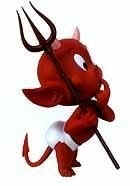Free information resources
articles, tutorials, tips and tricks
Adding new information daily
››› info

Leaking fluids of any kind is a problem. Brakes & Automatic Transmissions use steel lines which can easily be repaired if you have the right tools and patience. It's critical to make sure that brake lines aren't leaking, because your brakes are the most important safety feature on you vehicle. If you have doubts, seek help from a professional shop or someone who is experienced in doing this type of work.

The image shows good representation of what usually comes in the kit.
The clamp with the two wing nuts on it is used to secure the tubing in place while you are flaring the tubing.
The small black discs are anvils made for the various sizes of tubing and work to give the primary shape to the tubing as so you get what's know as a double flare. These are usually stamped or etched to the size of the tubing that you are working with. It's important to use the right size so you get the proper fit.
The U shaped piece with the screw through the top is the flaring tool that you will use for two steps to actually flare the tubing.

High speed cutting wheels such as a Dremel or cut off saw will heat up the end of the line changing the hardness properties of the metal, and using a hack saw will cause a jagged end and both of those methods will be a sure way to cause a crack at the during the flaring process.
Tubing cutters are a simple tool. You tighten the screw as you spin around the tuning.
More spinning than clamping will give you a better cut, and your tool will last longer.
Most folks like to really tighten the screw as hard as they can then spin a couple of times, and tighten the
screw again, and spin a couple of times and repeat this until the line is cut.
This causes the end of the line to deflect inward which can cause the end of the line to crack during the flaring process.
Light pressure on the screw and more spins will make a cleaner cut and keep the line from deflecting inward.
If you don't believe me, then watch an experience plumber. They deal with larger pipes that
They cut all day, and knowing that they have to fit after they've made there cut.

A good flaring set will come with a tool that will have a tapered cleaning tool, so you can debur the inside end of the tube.
Tubing on the automobile is smaller and easier to make mistakes, so take you time and do it right.

After the tubing is cut, place the fitting over the tubing. It will really be cause for a temper tantrum if you forget to put the fitting on and make the flare, because now you have to cut off that flare to slide the fitting on. In a rush because it's cold out and you don't want to be lying on the ground for very long you can make the same mistake more than once.
An easy way to make sure that you do the job right is to use tape to keep the fitting from sliding off the tube while you reach to the clamp bar. This makes flaring those lines that are facing downward a little easier as well. This way your sure to have the fitting on the tube before you take the time to make the flare.

It is important to clamp the tubing at the correct length so the flare will come out correctly. In this photo, the small disc anvil is also used to gauge the tubing for the correct length. Place the anvil flush against the clamp, beside the protruding section of tubing, and adjust the tubing in the clamp until they are even with each other (as can be seen in the above picture). Tighten the wing nuts on the clamp as tight as you can so the tubing does not move while the flare is being formed.

Slip the flaring tool over the clamp and place the anvil disc over the end of the tubing. This is basically a screw press. Squaring up the tool as you turn the screw down on top of the anvil holding everything in place while you tighten the screw in the flaring tool.
Keeping the screw well oiled is going to make the tool last longer and screw down easier.
If you clean any oil off your hands then it won't take much force to turn the screw.
Tighten the screw until the anvil disc is pressed completely flush to the clamp.
 p>
p>
Remove the flaring tool and the anvil disc. The flared end of the tubing should be well formed and even all the way around. The picture above is not a perfect example of what it should look like. The above picture should give you a pretty good idea of what you are looking for. Nicely shaped, even all the way around, and properly centered on the end of the tubing.

Put the flaring tool back onto the clamp and once again tighten it. You are now applying the 2nd or creating the "double" flare to the tubing. Tighten the screw until it does not go any further.

Here is a close-up of the 2nd "double" flare being applied. The screw has been tightened as far as it can go.

Here is the final product. I believe that if you spend the money on a good tool you'll get better results.

